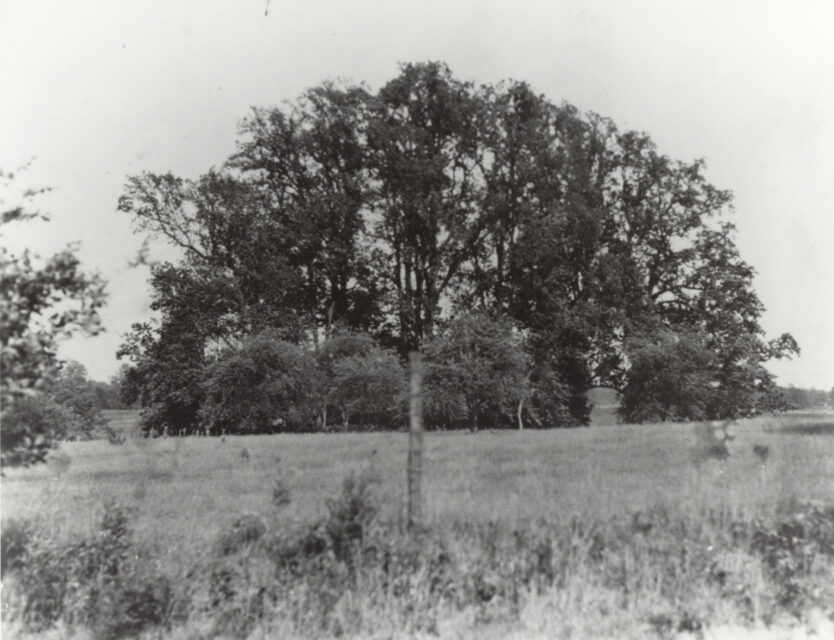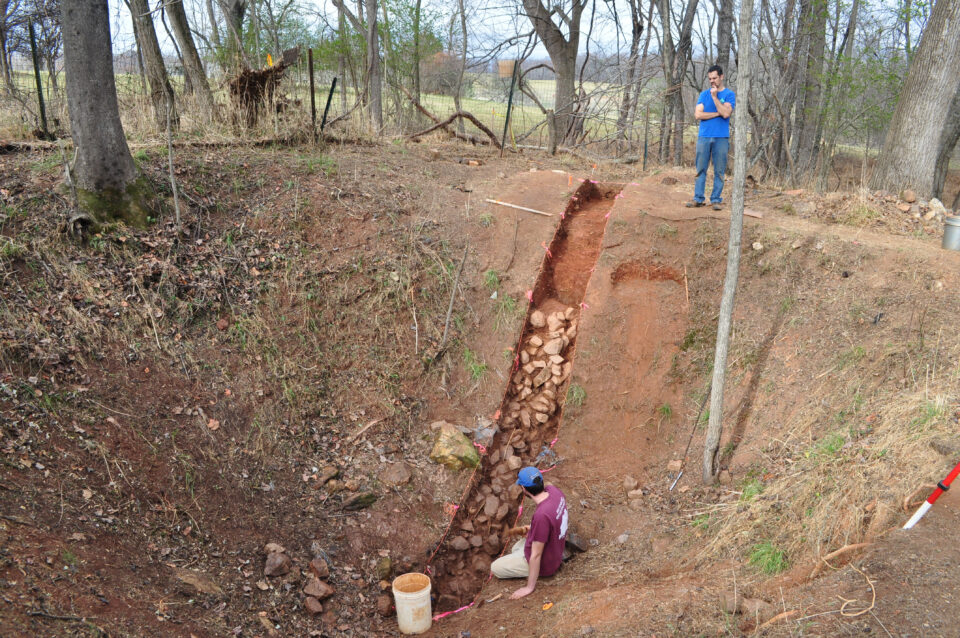Archaeology Blog
The North Grove Ice House at Poplar Forest
By: Steve Lenik, Ph.D.
Ice houses are underground pits that stored ice or snow collected during the winter to provide chilled food and beverages throughout the year. These were common within elite society in eastern North America and western Europe in the late 18th and early 19th centuries, and were among Thomas Jefferson’s many interests. He observed ice houses in Virginia and Europe, designed ice houses for Monticello and the White House, and assisted James Madison at Montpelier and William Garth at Birdwood in building their own. Jefferson owned Thomas Moore’s An Essay on the Most Eligible Construction of Ice Houses and purchased one of Moore’s portable refrigerators, which he brought to Poplar Forest in 1819, as recorded in a letter by his granddaughter Ellen Randolph.
Although Jefferson’s surviving correspondence does not mention an ice house at Poplar Forest, the site was recorded in other documents and oral histories, and Poplar Forest’s archaeologists have recently completed investigations of the remains of one in an area known as the North Grove. According to Francis Eppes’ memoranda book, this ice house was built in January 1826, only a few months before Jefferson died. It continued to be used every winter until 1844, when Edward Hutter directed enslaved laborers to repair the site, constructing a timber-frame enclosure surrounded by a stone-lined pit. The ice house probably continued to be used over the next few decades, until it was replaced by a new ice house on the South Lawn. The old North Grove ice house was converted into a trash pit by the 1880s, as evidenced by glass bottles and ceramic plates recovered by archaeologists, and continued to be used for refuse deposal into the mid-20th century.
Poplar Forest archaeologists noted a depression filled with trash in the North Grove and initially tested the site in 1992. During the winters of 2021 and 2023, archaeologists have returned to take a closer look at the North Grove ice house by excavating a pair of two-foot wide trenches from the pit’s edge down to its base. This identified the original 1826 pit’s edge, and redeposited soil from the 1844 repair. The stone enclosure, shown in the accompanying image, appears to be oval-shaped, measuring about 20 feet by 17 feet. The pit measures about 10 feet from the overlying ground surface to the top of the stone-lined base, which was likely designed to allow melting water to drain away from the ice that was suspended upon a wood frame. Analysis is also beginning to show how the site may have fit within Jefferson’s landscape, as it was placed atop a hill and surrounded by a grove of Jefferson-era tulip poplars, as shown in this mid-20th-century image. Additional research into this site has the ability to add to our understanding of the North Grove as a feature of Poplar Forest’s landscape and adds a deeper appreciation of what may have been the last element added to the landscape of Jefferson’s retreat during his lifetime.

